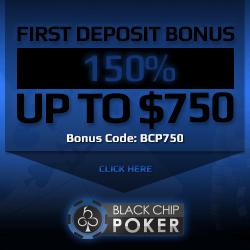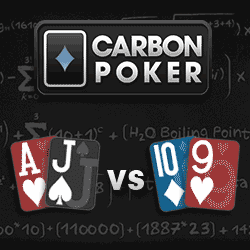Tips and Strategy For Dealing With Ups and Downs of
Caribbean Stud
How to Play Caribbean Stud
Caribbean Stud is one of the most popular new games being played in casinos. While the origin of the game is in dispute, most people agree that this variation of five-card stud was invented in the 1980’s. To make things more complicated, the owner of the Excelsior Casino in Aruba claims he learned the game and bought it to showcase in his casino. This version is where the name Caribbean Stud comes from.
Caribbean Stud Poker Rules
Ante bets are placed on a marked spot called the layout. These bets need to be placed before the dealer announces “no more bets.” At some Caribbean Stud games, players have the option to bet on a progressive jackpot, a bet which is also made before the dealer makes that announcement.
Each player has to control their own wagers rather than depend on the dealer. That progressive jackpot mentioned above is $1, a bet that makes you eligible for whatever progressive jackpot your game is tied into.
Caribbean Stud Misdeals – Card Rules
If you’re given an incorrect number of cards, this means you have a dead hand. A dead hand results in a “push.” The other hands at the table are played as normal. If the dealer is given only 4 of the 5 cards for his or her hand, then a fifth card is dealt to the dealer. All other misdeals mean the hand is voided and the cards are reshuffled.
Once you get your five cards, they have to stay in the dealer’s line of sight. You are not allowed to move your cards under the table or off the table line.
Once you’ve looked at your cards, you place them face down on the table. After this is done, you can’t look at the cards a second time. This is to prevent card-marking.
If your hole card is flashed to the table before the dealer says “No more bets,” any bets in that hand will be voided. In case of a dispute, any decisions by the dealer or the dealer’s casino supervisor is considered final.
These are the basic rules of Caribbean Stud. What makes Caribbean Stud so interesting is that you’re not just playing against a pay table, but against the dealer, too. Your hand has to beat the dealer’s hand to win the wager. The dealer has to have at least an A-K for this rule to go into effect, though.
Caribbean Stud Progressive Jackpot
Players love the addition of the progressive jackpot in Caribbean Stud. The payouts are bigger when playing in Macau than the USA payouts listed above. You’ll get $5000 on a four of a kind, $1500 on a full house, and $1000 on a flush. In Australia, you get paid more: $1,250 on a four of a kind, $375 on a full house, and $250 on a flush. Below is the basic pay chart.
Royal Flush – 100:1
Straight Flush – 50:1
4 of a Kind – 20:1
Full House – 7:1
Flush – 5:1
Straight – 4:1
3 of a Kind – 3:1
Two Pair – 2:1
One Pair or less – 1:1
Caribbean Stud Strategy
The first thing anyone should know about Caribbean Stud is you have no bluffs in the game. You don’t have opponents to bluff out of a pot, while no one is trying to bluff you. It’s the player versus the casino. This appeals to casual players, tourists, and vacationers, because they don’t feel the stress of standard Texas hold’em poker.
The house edge sits at 5.24% for Caribbean Stud poker if you use optimal strategy. Achieving optimal play is complicated and hard in a casino environment, but a common simpler strategy pays off almost at the same level, as you get a house edge around 5.32%. This strategy requires you to hold onto any pair or better that you receive, along with the folding anything less than an A-K hand.
When you have the Ace-King and the dealer is also showing the Ace-King, you should raise if you have an Ace-King-Queen or Ace-King-Jack, since you should be able to beat the dealer’s hand.
Caribbean Stud Sample Hand #1
To give you some indication of how Caribbean Stud works, let’s imagine you place an ante wager of $5 along with a progressive jackpot wager of $1. You get five cards from the dealer: A-J-9-5-2 off-suit. Since this isn’t much of a hand, you decide not to make a second bet. Avoiding a second bet with weak cards is the best way to minimize losses.
It looks like you’ve lost your bet, but the dealer’s hand is revealed to be a A-Q-10-6-3. You might think that hand beats yours, so you lose, but the dealer didn’t qualify to win. The house has to make an A-K to win, so you win the bet. You receive 1-to-1 payout or $5 on the bet, though you lose the $1 wager on the progressive jackpot.
Caribbean Stud Sample Hand #2
For another example, imagine you place another $5 wager along with a $1 bet on your game’s progressive jackpot. You are dealt the unlikely combination of K-K-K-10-10. The dealer shows an equally unlikely combination: Q-Q-Q-J-J. This time around, the dealer has qualified to win, but you have the better hand. Now would be the time to double your wager with a second bet.
If this were a real game, you’d receive a 7-to-1 payout on your ante wager and second wager. You would also receive an extra $100 for receiving a full house on your progressive jackpot wager, assuming you’re playing Caribbean stud in the United States at a game that offers the progressive bet.
Caribbean Stud is a fun variation on five-card draw that totally changes the way the game is played. The progressive jackpot bet is probably a losing one, and hardcore poker players may find the game a little too much like video poker, but for a fun distraction from Texas hold’em play, Caribbean Stud makes the grade.



